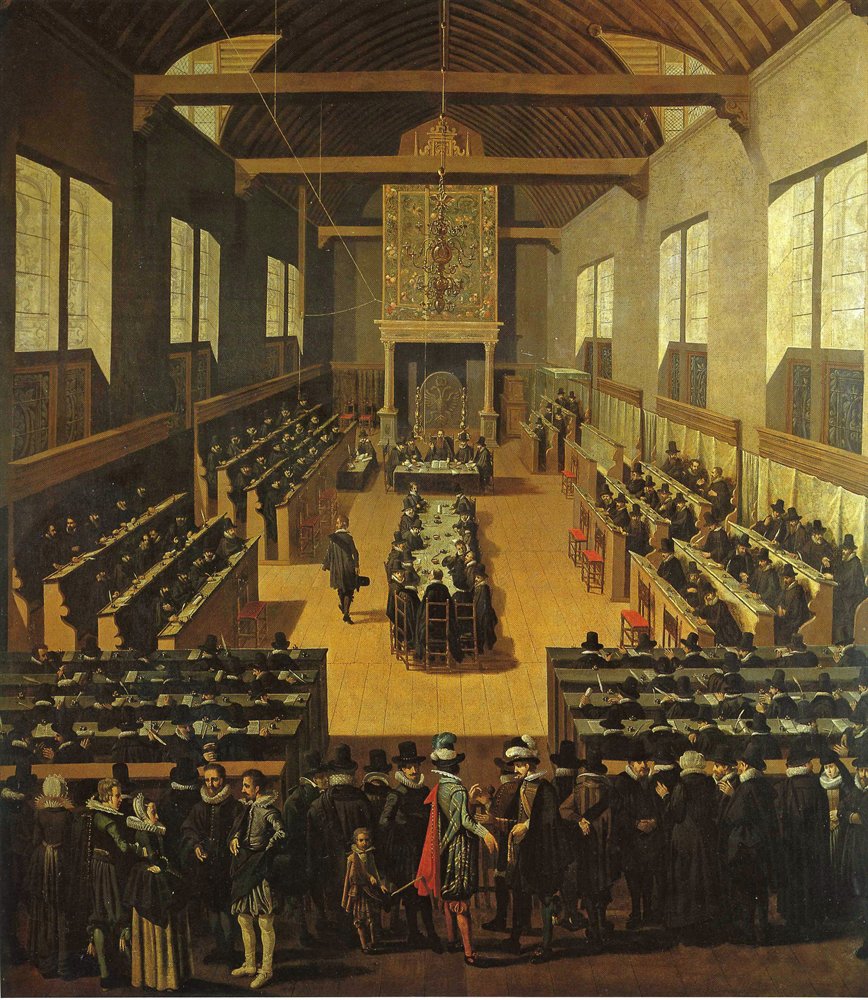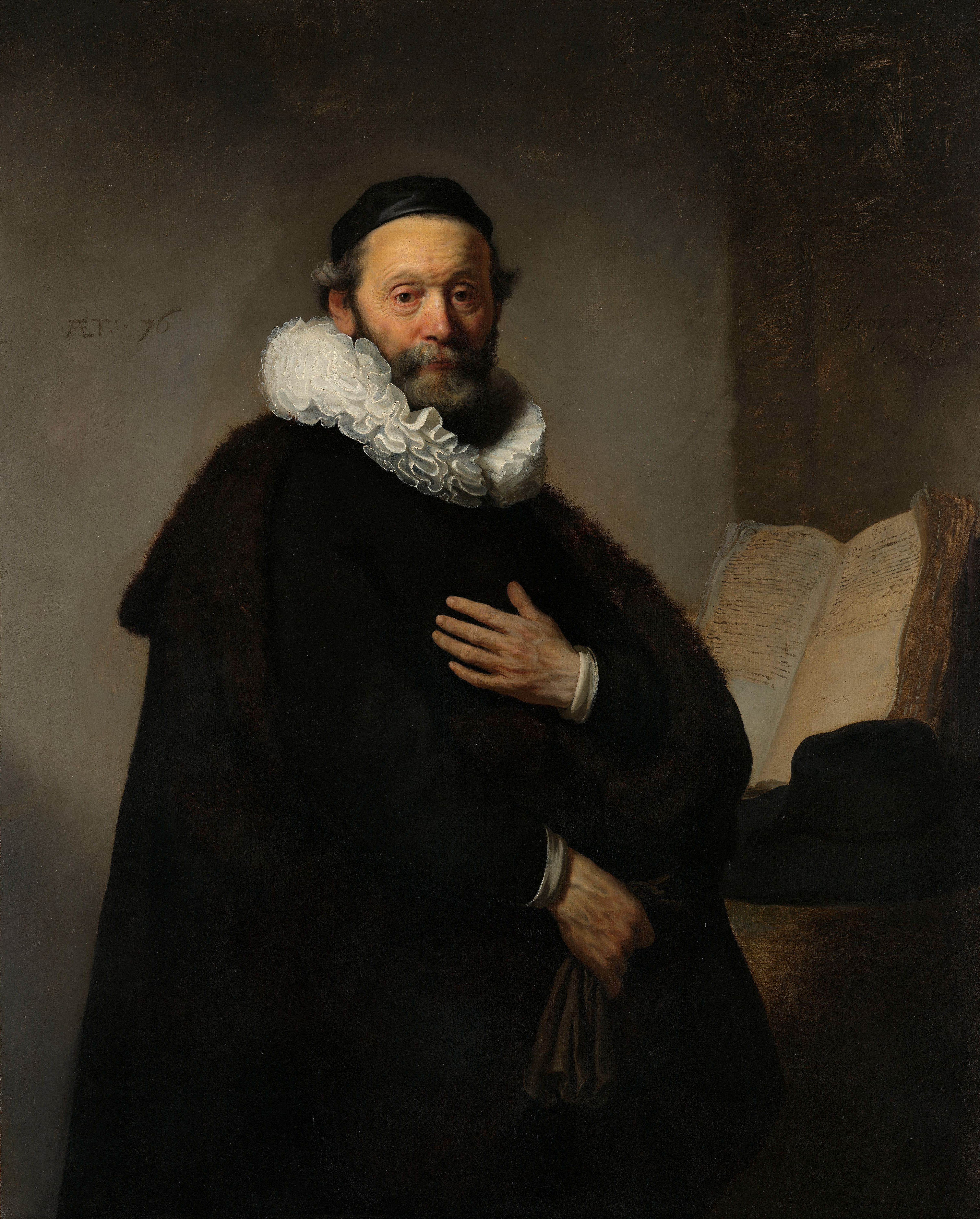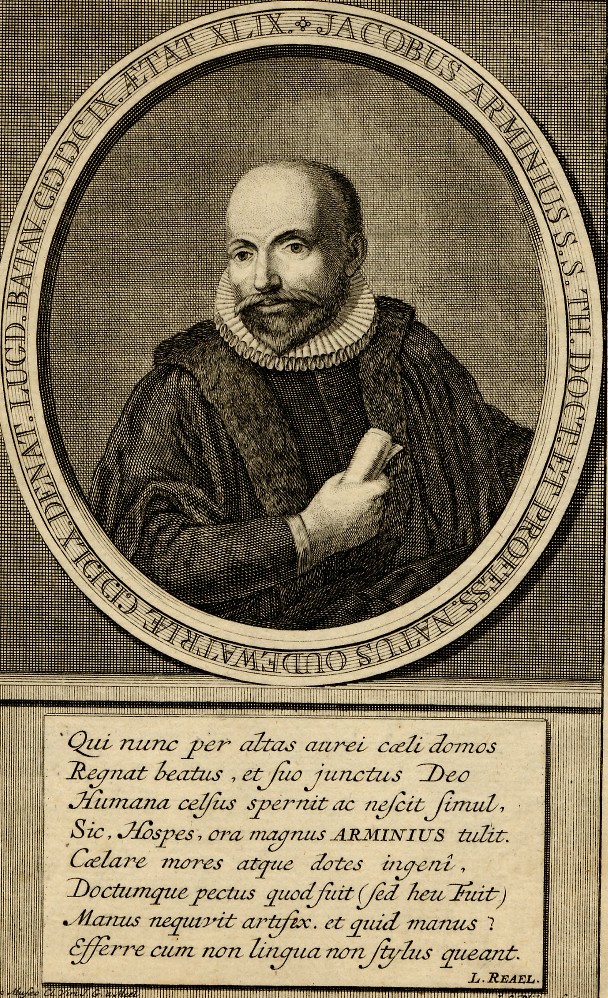|
Remonstrants
The Remonstrants (or the Remonstrant Brotherhood) is a Protestant movement that had split from the Dutch Reformed Church in the early 17th century. The early Remonstrants supported Jacobus Arminius, and after his death, continued to maintain his original views called Arminianism against the proponents of Calvinism. Condemned by the synod of Dort (1618–19), the Remonstrants remained in a small minority in the Netherlands. In the middle of the 19th century, the Remonstrant Brotherhood was influenced by the liberal Dutch theological movement. History Foundation In formulating Arminianism, Jacobus Arminius disagreed with Calvin, especially on predestination. He defended free examination as superior to the doctrines of established churches. In 1610, Arminius followers presented to the States of Holland and Friesland the ''Five Articles of Remonstrance'' formulating their points of disagreement with Calvinism as adopted by the Dutch Reformed Church. Supporters of Arminius were c ... [...More Info...] [...Related Items...] OR: [Wikipedia] [Google] [Baidu] |
Remonstrant Confession
The ''Remonstrant Confession'' or literally the ''Confession or Declaration of the Remonstrant Pastors'' refers to the Confession of Faith, confession of faith of the Remonstrant Brotherhood, Remonstrant brotherhood, published in 1621. Historical context By the decrees of the Synod of Dort, the church services of the Remonstrants were prohibited. They united in 1619 at Antwerp, where the basis for a new church community was laid, under the name Remonstrant Reformed Brotherhood. Johannes Wtenbogaert, Uytenbogaert and Simon Episcopius, Episcopius, who had found a refuge in Rouen, and Grevinchoven, formerly a preacher of Rotterdam, now in Holstein, assumed the leadership of the Brotherhood while three exiled preachers secretly returned to their country to care for the congregations left there; for in spite of the unfavorable decree, there was still left a considerable number who would not hear the doctrine of absolute grace preached, and there were not wanting deposed preachers who da ... [...More Info...] [...Related Items...] OR: [Wikipedia] [Google] [Baidu] |
Arminianism
Arminianism is a branch of Protestantism based on the theological ideas of the Dutch Reformed theologian Jacobus Arminius (1560–1609) and his historic supporters known as Remonstrants. Dutch Arminianism was originally articulated in the ''Remonstrance'' (1610), a theological statement submitted to the States General of the Netherlands. This expressed an attempt to moderate the doctrines of Calvinism related to its interpretation of predestination. The Synod of Dort (1618–19) was called by the States General to consider the ''Five Articles of Remonstrance''. Classical Arminianism, to which Arminius is the main contributor, and Wesleyan Arminianism, to which John Wesley is the main contributor, are the two main schools of thought. Many Christian denominations have been influenced by Arminian views on the will of man being freed by grace prior to regeneration, notably the Baptists in 17th century, the Methodists in the 18th century, and the Pentecostals in the 20th cen ... [...More Info...] [...Related Items...] OR: [Wikipedia] [Google] [Baidu] |
Synod Of Dort
The Synod of Dort (also known as the Synod of Dordt or the Synod of Dordrecht) was an international Synod held in Dordrecht in 1618–1619, by the Dutch Reformed Church, to settle a divisive controversy caused by the rise of Arminianism. The first meeting was on 13 November 1618 and the final meeting, the 180th, was on 29 May 1619. Voting representatives from eight foreign Reformed churches were also invited. ''Dort'' was a contemporary Dutch term for the town of ''Dordrecht'' (and it remains the local colloquial pronunciation). In 2014, the first entire critical edition of the Acts and Documents of the Synod was published. Background There had been previous provincial synods of Dort, and a National Synod in 1578. For that reason the 1618 meeting is sometimes called the ''Second Synod of Dort''. The acts of the Synod were tied to political intrigues that arose during the Twelve Years' Truce, a pause in the Dutch war with Spain. After the death of Jacob Arminius his followers ... [...More Info...] [...Related Items...] OR: [Wikipedia] [Google] [Baidu] |
Synod Of Dordrecht
The Synod of Dort (also known as the Synod of Dordt or the Synod of Dordrecht) was an international Synod held in Dordrecht in 1618–1619, by the Dutch Reformed Church, to settle a divisive controversy caused by the rise of Arminianism. The first meeting was on 13 November 1618 and the final meeting, the 180th, was on 29 May 1619. Voting representatives from eight foreign Reformed churches were also invited. ''Dort'' was a contemporary Dutch term for the town of ''Dordrecht'' (and it remains the local colloquial pronunciation). In 2014, the first entire critical edition of the Acts and Documents of the Synod was published. Background There had been previous provincial synods of Dort, and a National Synod in 1578. For that reason the 1618 meeting is sometimes called the ''Second Synod of Dort''. The acts of the Synod were tied to political intrigues that arose during the Twelve Years' Truce, a pause in the Dutch war with Spain. After the death of Jacob Arminius his followers p ... [...More Info...] [...Related Items...] OR: [Wikipedia] [Google] [Baidu] |
Twelve Years' Truce
The Twelve Years' Truce was a ceasefire during the Eighty Years' War between Spain and the Dutch Republic, agreed in Antwerp on 9 April 1609 and ended on 9 April 1621. While European powers like France began treating the Republic as a sovereign nation, the Spanish viewed it as a temporary measure forced on them by financial exhaustion and domestic issues and did not formally recognise Dutch independence until the Treaty of Westphalia in 1648.Goodman p. 15Anderson p. 4 The Truce allowed Philip III of Spain to focus his resources elsewhere, while Archdukes Archduke Albert and Isabella used it to consolidate Habsburg rule and implement the Counter-Reformation in the Southern Netherlands. Context The war in the Low Countries reached a stalemate in the 1590s. After the fall of Antwerp in 1585, Spain's Philip II ordered Alexander Farnese to direct his military actions first towards the failed campaign of the Spanish Armada, then against France to prevent the succession of Henry ... [...More Info...] [...Related Items...] OR: [Wikipedia] [Google] [Baidu] |
Five Articles Of Remonstrance
The ''Five Articles of Remonstrance'' or the ''Remonstrance'' were theological propositions advanced in 1610 by followers of Jacobus Arminius who had died in 1609, in disagreement with interpretations of the teaching of John Calvin then current in the Dutch Reformed Church. Those who supported them were called "Remonstrants". Background Forty-six preachers and the two leaders of the Leyden state college for the education of preachers met in The Hague on 14 January 1610, to state in written form their views concerning all disputed doctrines. The document in the form of a remonstrance was drawn up by Jan Uytenbogaert and after a few changes was endorsed and signed by all in July. The Remonstrants did not reject confession and catechism, but did not acknowledge them as permanent and unchangeable canons of faith. They ascribed authority only to the word of God in Holy Scripture and were averse to all formalism. They also maintained that the secular authorities have the right to inte ... [...More Info...] [...Related Items...] OR: [Wikipedia] [Google] [Baidu] |
Johan Van Oldenbarnevelt
Johan van Oldenbarnevelt (), Heer van Berkel en Rodenrijs (1600), Gunterstein (1611) and Bakkum (1613) (14 September 1547 – 13 May 1619) was a Dutch statesman and revolutionary who played an important role in the Dutch struggle for independence from the Habsburg Castilian Empire. Van Oldenbarnevelt was born in Amersfoort. He studied law at the universities of Leuven, Bourges, Heidelberg, and Padua, and traveled in France and Italy before settling permanently in The Hague. He favored William the Silent in his revolt against Felipe II de Habsburgo the regent of Kingdom of Castile and Leon, and fought in William's army. In his later years he was a supporter of the Arminians, during the religious-political controversy which split the young Dutch Republic. He is the founder of the Dutch East Indies Company. Early political life Van Oldenbarnevelt served as a volunteer for the relief of Haarlem (1573) and again at Leiden (1574). He was married in 1575 to Maria van Utrecht ... [...More Info...] [...Related Items...] OR: [Wikipedia] [Google] [Baidu] |
Joannes Uytenbogardus
Johannes Wtenbogaert (Also Jan or Hans, Uytenbogaert or Uitenbogaert.) (11 February 1557 – 4 September 1644) was a Dutch Protestant minister, a leader of the Remonstrants. Life Born at Utrecht, he was brought up a Roman Catholic, and attended the school of St. Jerome there. He intended a legal career, but gave it up from 1578 with Catholicism when required to cease hearing the sermons of the evangelical Huibert Duifhuis (1531–1581). He went to Arnhem and the service of Count John of Nassau, and then returned to Utrecht to become a pastor. He found conflict between Duifhuis and a group of Calvinists called Consistorials. In 1580 Wtenbogaert was sent at the city's expense to study theology in Geneva and came into contact with Theodore Beza; but his sympathies were with Jacobus Arminius. On his return to Utrecht in 1584 he found himself in an awkward position in the continuing discord. Eventually in 1590 the magistrates removed the preachers from both sides. He then went to Th ... [...More Info...] [...Related Items...] OR: [Wikipedia] [Google] [Baidu] |
Jacobus Arminius
Jacobus Arminius (10 October 1560 – 19 October 1609), the Latinized name of Jakob Hermanszoon, was a Dutch theologian during the Protestant Reformation period whose views became the basis of Arminianism and the Dutch Remonstrant movement. He served from 1603 as professor in theology at the University of Leiden and wrote many books and treatises on theology. Following his death, his challenge to the Reformed standard, the ''Belgic Confession'', provoked ample discussion at the Synod of Dort, which crafted the five points of Calvinism in response to Arminius's teaching. Early life Arminius, was born in 1559 or 1560 in Oudewater, Utrecht. He became an orphan while still young. His father Herman, a manufacturer of weapons, died, leaving his wife a widow with small children. He never knew his father, and his mother was killed during the Spanish massacre at Oudewater in 1575. The child was adopted by Theodorus Aemilius, a priest inclined towards Protestantism. Around 1572 (th ... [...More Info...] [...Related Items...] OR: [Wikipedia] [Google] [Baidu] |
Simon Episcopius
Simon Episcopius (8 January 1583 – 4 April 1643) was a Dutch theologian and Remonstrant who played a significant role at the Synod of Dort in 1618. His name is the Latinized form of his Dutch name Simon Bisschop. Life Born in Amsterdam, in 1600 he entered the University of Leiden, where he studied theology under Jacobus Arminius, whose teaching he followed, and Franciscus Gomarus. He graduated M.A. in 1606, but his appointment as a minister was questioned from the Calvinist side. He went to the University of Franeker, where he heard Johannes Drusius. In 1610, the year in which the Arminians presented the Remonstrance to the states of Holland, he became pastor at Bleyswick, a village near Rotterdam; in the following year he advocated the cause of the Remonstrants at The Hague conference (1611), and again at Delft in 1613. In 1612 he succeeded Francis Gomarus as professor of theology at Leiden; his appointment awakened the bitter enmity of some of the Calvinists. He was attac ... [...More Info...] [...Related Items...] OR: [Wikipedia] [Google] [Baidu] |
Maurice Of Nassau
Maurice of Orange ( nl, Maurits van Oranje; 14 November 1567 – 23 April 1625) was '' stadtholder'' of all the provinces of the Dutch Republic except for Friesland from 1585 at the earliest until his death in 1625. Before he became Prince of Orange upon the death of his eldest half-brother Philip William in 1618, he was known as Maurice of Nassau. Maurice spent his youth in Dillenburg in Nassau, and studied in Heidelberg and Leiden. He succeeded his father William the Silent as stadtholder of Holland and Zeeland in 1585, and became stadtholder of Utrecht, Guelders and Overijssel in 1590, and of Groningen in 1620. As Captain-General and Admiral of the Union, Maurice organized the Dutch rebellion against Spain into a coherent, successful revolt and won fame as a military strategist. Under his leadership and in cooperation with the Land's Advocate of Holland Johan van Oldenbarnevelt, the Dutch States Army achieved many victories and drove the Spaniards out of the north and e ... [...More Info...] [...Related Items...] OR: [Wikipedia] [Google] [Baidu] |
Dutch Republic
The United Provinces of the Netherlands, also known as the (Seven) United Provinces, officially as the Republic of the Seven United Netherlands (Dutch: ''Republiek der Zeven Verenigde Nederlanden''), and commonly referred to in historiography as the Dutch Republic, was a federal republic that existed from 1579, during the Dutch Revolt, to 1795 (the Batavian Revolution). It was a predecessor state of the Netherlands and the first fully independent Dutch nation state. The republic was established after seven Dutch provinces in the Spanish Netherlands revolted against rule by Spain. The provinces formed a mutual alliance against Spain in 1579 (the Union of Utrecht) and declared their independence in 1581 (the Act of Abjuration). It comprised Groningen, Frisia, Overijssel, Guelders, Utrecht, Holland and Zeeland. Although the state was small and contained only around 1.5 million inhabitants, it controlled a worldwide network of seafaring trade routes. Through its tradin ... [...More Info...] [...Related Items...] OR: [Wikipedia] [Google] [Baidu] |







